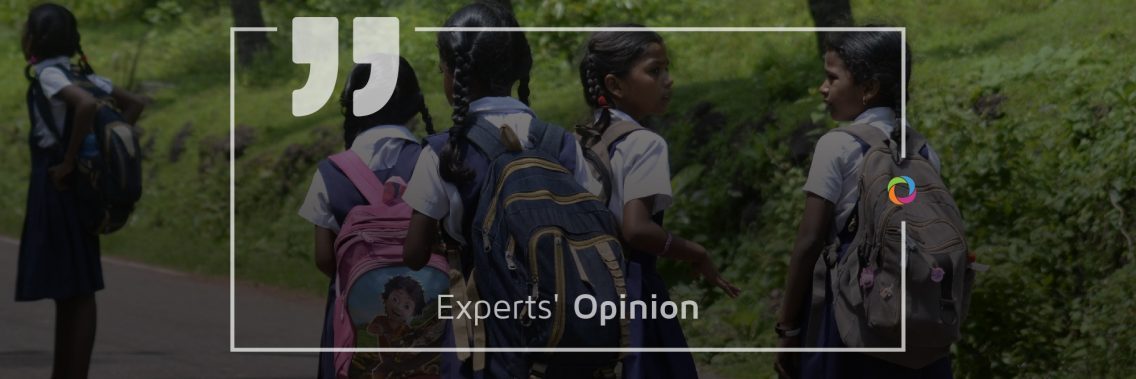Investing in the health and development of adolescents is essential for achieving the millennium development goals, promoting public health and ensuring economic development. Not only do adolescents suffer from significant mortality and morbidity, most adult health problems, from HIV to lung cancer and heart disease, but also have their roots in the attitudes and behaviors that begin in the second decade of life. There is an urgent need to invest in adolescent help, particularly in Low to Middle-Income Countries (LMIC) where the needs are greatest and the resources most limited. What do global health experts say about this? Check their answers below.
What are the key challenges of adolescent health in LMIC settings?

“Adolescent health challenges in LMIC fall into three categories. Demand – the combination of social, cultural and economic factors such as low education level, high abject poverty rates, discriminatory social norms and extreme religious practices. Supply – limited health service delivery points for adolescents at health facilities and a lack of comprehensive sexuality education in communities and schools, an inadequate number of suitably trained health workers and a weak supply chain. Enablers – policies and legislation have not fully recognized the adolescent as a unique demographic segment in society and do not offer sufficient support and protection to adolescents.”

“The challenges faced by adolescents and young people are almost universal in LMIC with the main underlying issues being poverty, poor economic development and poor access to social services (education, health, water and sanitation etc.). The manifestation of the lack of these socio-economic fundamentals includes early sexual debut, high teenage pregnancy, child marriages, high risk of STIs and HIV infections and a high level of unwanted pregnancies and abortions among young people. These problems in adolescents are compounded by a lack of comprehensive knowledge on sexual reproductive health and rights, gender-based violence and the growing challenge of drug and substance abuse.”

“Adolescent health is determined by biological factors together with social, emotional and physical environments. During this critical development period, adolescents experience many physical, emotional and cognitive changes while also encountering new expectations, opportunities and threats. In LMICs, while infectious diseases are the main cause of deaths and morbidities in younger adolescents (10-14 years), older adolescents (15-19) are more likely to suffer from injuries, including road injuries, self-harm and violence. Adolescent pregnancy, often driven by child marriage, is an issue especially among younger adolescent girls and increases the risk of maternal and newborn complications and limits girls’ opportunities to education. Increasingly in LMICs, adolescents are also exposed to unhealthy food, tobacco and alcohol marketing that influences consumption patterns in adolescence and later in life.”
What can the international community do to improve adolescent health in LMIC settings?

“It is now, more than ever before, most important to listen keenly to, understand and respond to the nuances, complexities and layers of issues affecting young people. As an international community, we should remain committed to supporting efforts that put adolescents at the center. An opportunity to do so is through the HCD Exchange, a growing community of implementing partners, donors, futurists, young people, researchers, evaluators and designers who are committed to using the human-centered design (HCD) approach to realize adolescents sexual and reproductive health rights (ASRHR) in low-income settings. Finally, it’s worthwhile for all and sundry to remember that investing in adolescents now yields triple dividends with immediate results in their health today, progressive results in their families in the future and ultimate demographic dividend.”

“Creating awareness and enabling an environment where parents are prepared for raising an adolescent with a positive approach and support as well as being their friends. Secondly, having counseling and free spaces for adolescents in schools and apprising teachers about how to handle adolescents who need support outside their homes and making sure that early childhood development programs are linked with adolescent health programs too. Lastly, it is important that operational research is inbuilt in all the programs that are designed by the international community so that the LMICs can then later design their programs well which are locally relevant and are used to empower adolescents in the remotest parts of the world.”

“To comprehensively address adolescent health, adolescence needs to be recognized as an integral part of all policies at global, national and sub-national levels. Primary health care services require increased investment, including into skilled health workforce, so that services respond to adolescents’ needs that are often context-specific. Further, policies and laws need to be in place to protect adolescents (e.g. road safety, child marriage) and enable them to access services and information. This includes also tackling tobacco, alcohol or unhealthy food marketing and sales. We need better data systems for informing programs and policies. Particularly during epidemics like COVID-19, we need to assess the short and long-term impacts of the response on adolescents, including mental health.”
Check more than 600 job opportunities in global health here.

